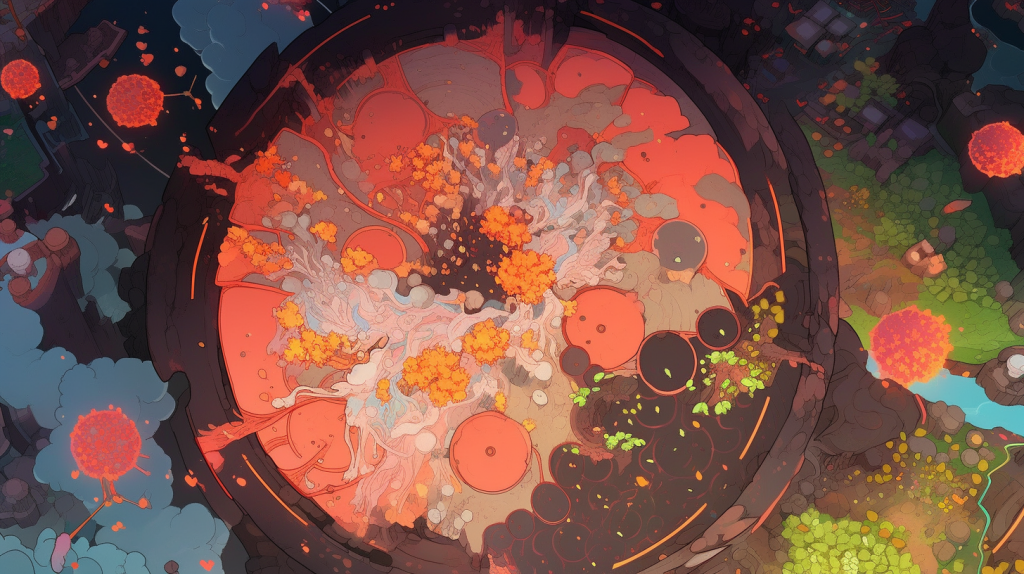Table of Contents
A 21st Century Update to The Hallmarks of Cancer

Introduction: A Decade of Progress, A Lifetime of Questions
In the early 2000s, a landmark paper titled “The Hallmarks of Cancer” by Hanahan and Weinberg proposed a conceptual framework for understanding the complex and daunting world of cancer. It was an attempt to simplify and make sense of the intricacies of a disease that has plagued humanity for generations. A decade has passed since then, and now it’s time to revisit, refine, and expand upon those initial revelations.
Just like any profound discovery, the original hallmarks have spurred numerous questions, and our understanding of cancer has both deepened and broadened. Are tumors mere agglomerations of rogue cells? Or are they more like intricately constructed ‘organs,’ complete with a supporting cast of cells contributing to their nefarious functions?
Cancer is Not Just About Cancer Cells
Imagine a bustling city, complete with different neighborhoods, roads, and people fulfilling various roles. Now consider this: a tumor is much like that city, a complex tissue comprising not just cancerous cells but also a host of other ‘normal’ cells. These cells are recruited and reprogrammed to build the tumor’s infrastructure—referred to as the “tumor microenvironment.” So, when we talk about cancer, we’re not just talking about a bundle of rogue cells. We’re talking about a sophisticated, collaborative, and perilously efficient microcosm.
The New Dimensions: Hallmarks and Beyond
The original hallmarks—sustaining proliferative signaling, evading growth suppressors, resisting cell death, enabling replicative immortality, inducing angiogenesis, and activating invasion and metastasis—are still very much relevant. But science, being the ever-evolving discipline that it is, has added more layers to this conceptual onion.
Two new emerging hallmarks have joined the list: reprogramming of energy metabolism and evading immune destruction. Notably, these are not just characteristics of the cancer cells themselves but are often enabled by their supporting cast—the microenvironment. In fact, the tumor microenvironment has been shown to have a significant impact on the immune system’s ability to recognize and destroy cancer cells.
Therapeutic Implications: The Moving Target
The evolving understanding of cancer’s hallmarks has profound implications for treatment. Initially, the focus was on developing drugs targeting specific molecular aspects of cancer. However, these therapies often led to temporary relief followed by relapse. Why? Because cancer adapts.
Think of it as a shape-shifting monster. If one pathway is blocked, it finds another. Sometimes, when one hallmark is subdued, another takes its place, and the cancer progresses in a new, equally menacing form. For instance, certain therapies that successfully block angiogenesis (formation of new blood vessels) have led to tumors becoming more invasive instead.
The Next Frontier: Multi-Targeted Therapies and Beyond
The therapeutic approach is beginning to evolve, from targeting individual hallmarks to taking a more holistic, multi-targeted approach. Think of it as a multi-pronged attack against a fortress that has multiple layers of defense.
A Glimpse into the Future
We’ve come a long way since the initial revelations, but we are still grappling with unanswered questions. How does cancer evade immune surveillance? What is the role of epigenetic changes? How do microRNAs contribute?
The coming decade promises even more exciting discoveries. We anticipate a clearer understanding of the complex signaling between the various cells within tumors. As we delve deeper, we continue to foresee cancer research becoming an increasingly logical science, where the complexities are manifestations of a small set of underlying principles.
Final Thoughts
Cancer is like a never-healing wound, an organ of its own, with its own set of rules. The hallmarks have provided us with a conceptual framework to understand this complex disease, but they are not set in stone. They are evolving, just like our understanding of cancer itself. And as we evolve in our understanding, so too will our strategies to fight this formidable foe.
Imagine a future where we don’t just attack cancer but dismantle it, hallmark by hallmark, piece by piece, until it’s nothing but a relic of a bygone era. This is the promise and the challenge of the new dimensions of cancer research. We must never stop refining, questioning, and aiming for that future.
